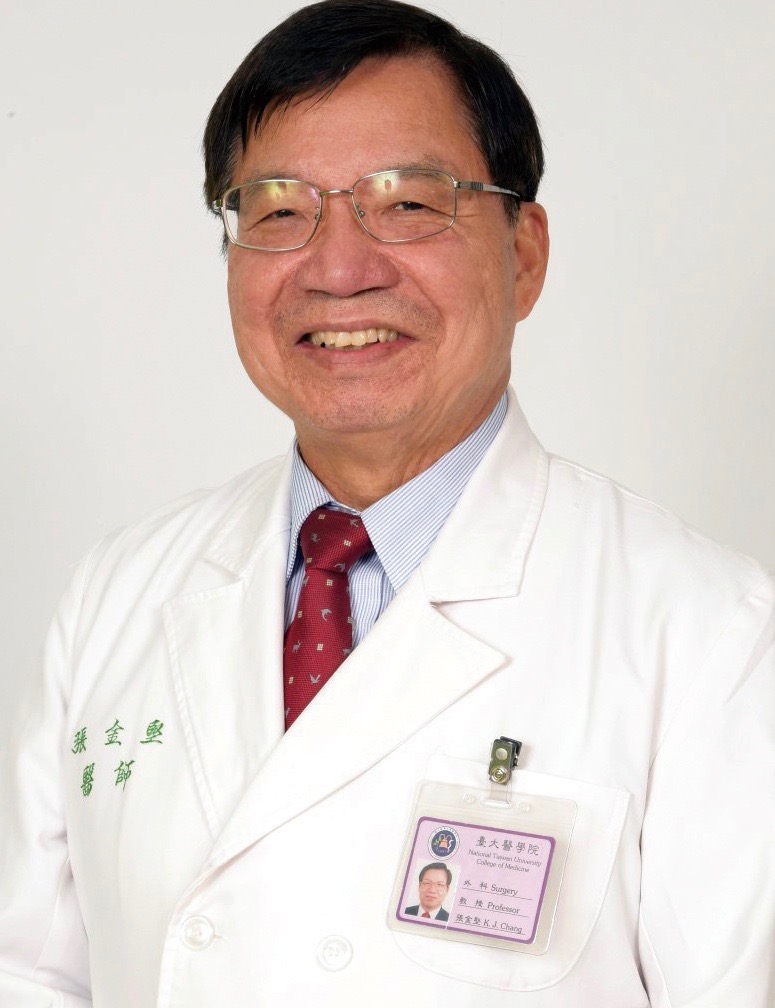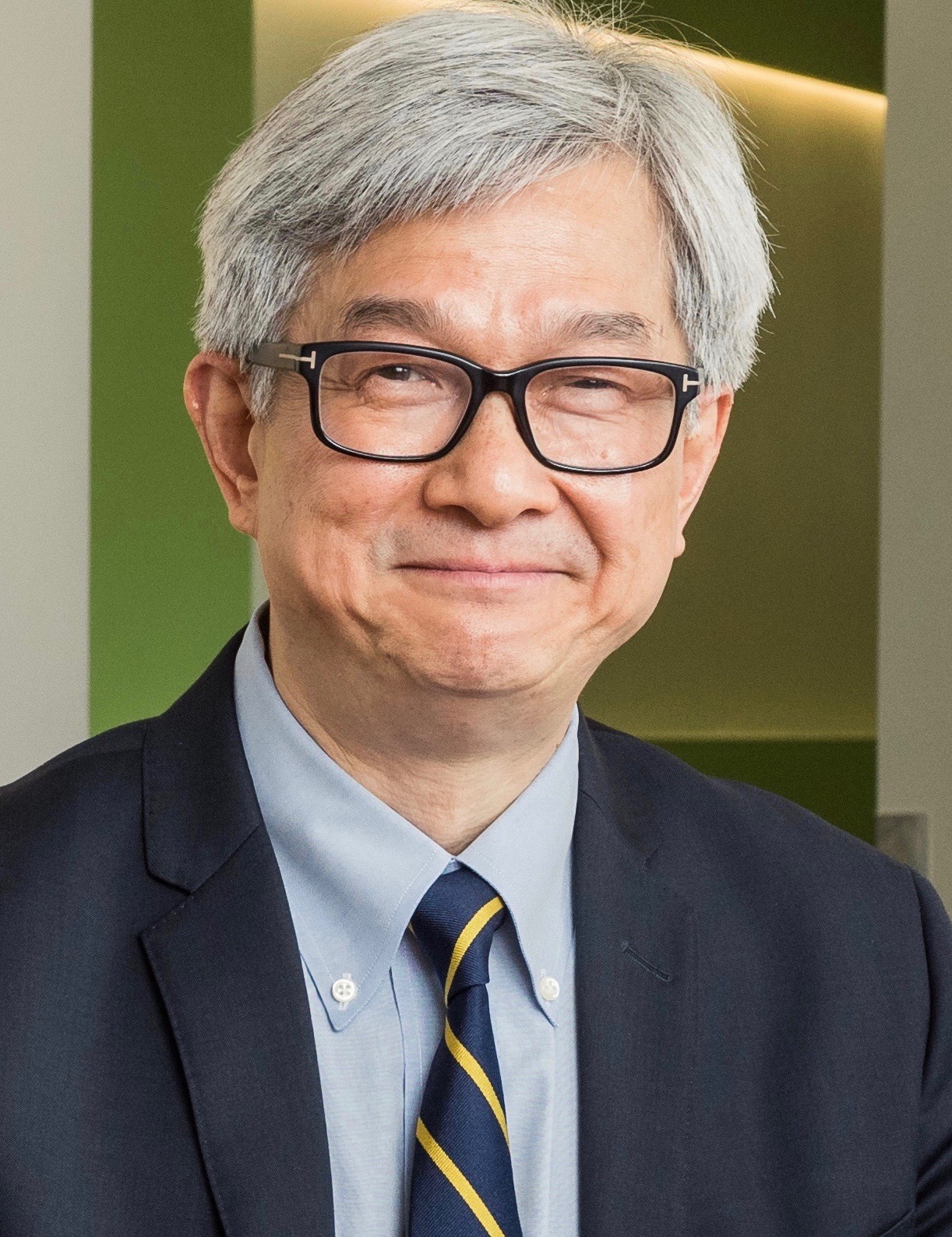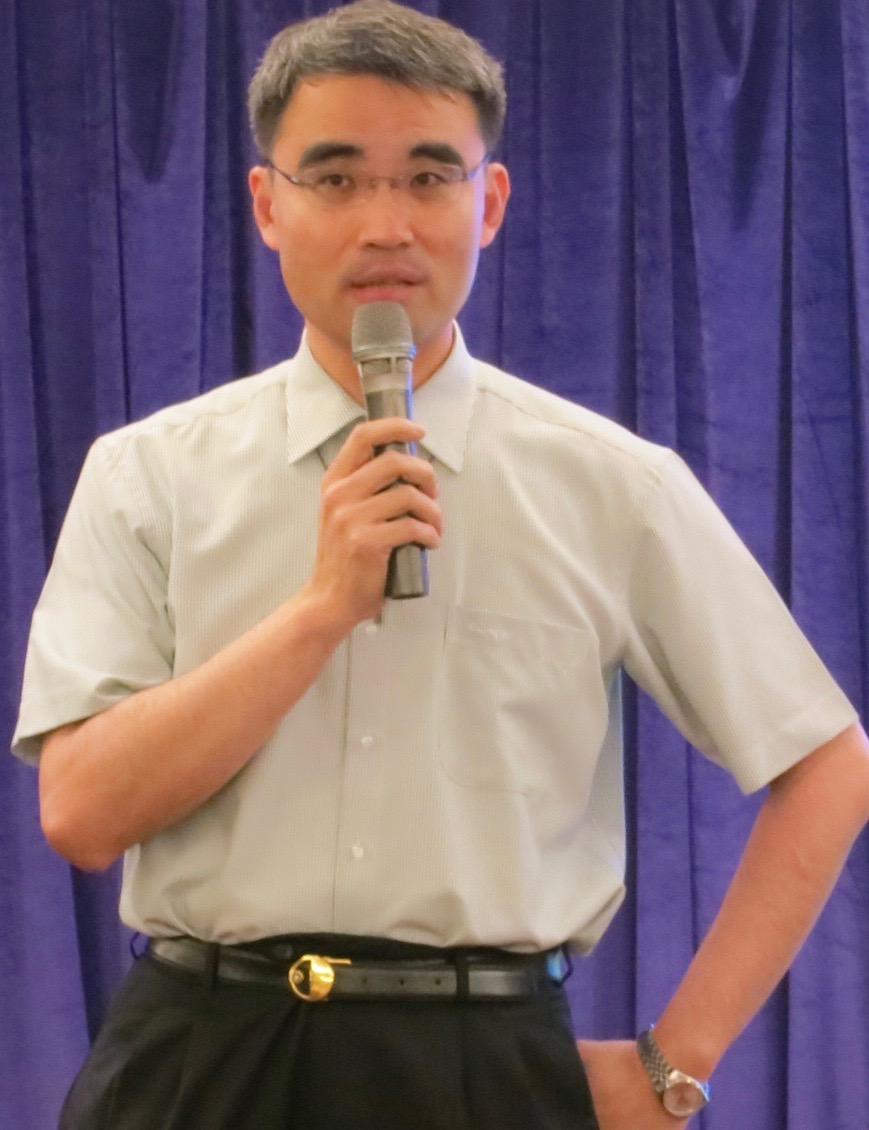
Monday, 19 June 201708:00 | Conference Registration, Materials Pick-Up, Morning Coffee and Breakfast Pastries | 08:45 |  | Moderator Welcome and Introduction to the Conference
King-Jen Chang, Chairman, Taiwan Breast Cancer Foundation, Professor, National Taiwan University, Taiwan
|
| 09:00 |  | Moderator Introduction to the Topic of Liquid Biopsy Addressed at this Conference
Tang-Long Shen, Professor, National Taiwan University, Taiwan
|
| |
Session Title: Emerging Themes in Liquid Biopsies, circa 2017 |
| | 09:05 |  | Keynote Presentation New Tools for Liquid Biopsies to Enable Precision Medicine
Steve Soper, Foundation Distinguished Professor, Director, Center of BioModular Multi-Scale System for Precision Medicine, The University of Kansas, United States of America
Liquid biopsies are generating great interest within the medical community due to the simplicity for securing important biomarkers to manage complex diseases, such as many of the cancer-related diseases. Liquid biopsy markers can facilitate the realization of Precision Medicine in terms of assisting in the discovery of new patient-specific therapies and stratifying patients to match them to appropriate therapies. We are developing a suite of novel microfluidic devices that can process whole blood directly and designed to efficiently search for a variety of disease-associated liquid biopsy markers from divergent subpopulations comprising the tumor microenvironment. The microfluidic devices can isolate the target with recovery >90% and sufficient purity (>80%) to enable downstream molecular analysis. In this presentation, I will discuss the development of a fluidic system for monitoring minimum residual disease (MRD) in acute myeloid leukemia (AML) patients following allosteric stem cell transplantation to detect signs of relapse without requiring a bone marrow biopsy. Specifically, the peripheral blood of patients were tracked longitudinally for signs of relapse using circulating leukemia cells with relapse detected nearly 2 months prior to the standard of care, which required a bone marrow aspirate and multi-parameter flow cytometry. In addition, the staging of patients with multiple myeloma will be discussed via affinity selection of circulating plasma cells using peripheral blood samples with FISH carried out on the circulating plasma cells. |
| 09:50 |  | Keynote Presentation Exosomal RNAs as a Novel Liquid Biopsy For Cancer Diagnosis
Takahiro Ochiya, Professor, Department of Molecular and Cellular Medicine, Tokyo Medical University, Japan
|
| 10:35 | Morning Coffee and Tea Break: Network with Your Peers and Poster Viewing | 11:30 | Cell-Free DNA Analysis of NSCLC Patients: A Paradigm for Clinical Use of Liquid Biopsies
Partha Das, Global Medical Affairs Lead, Genomics and Oncology, Roche Molecular Systems, United States of America
| 12:15 |  | Keynote Presentation NanoVelcro Assays for Detection and Characterization of Circulating Tumor Cells
Hsian-Rong Tseng, Professor, Crump Institute for Molecular Imaging, California NanoSystems Institute, University of California-Los Angeles, United States of America
Circulating tumor cell (CTC) is regarded as a liquid biopsy of tumor, allowing non-invasive, repetitive, and systemic sampling of disease. Although detecting and enumerating CTCs is of prognostic significance in metastatic cancer, it is conceivable that performing molecular and functional characterization on CTCs will reveal unprecedented insight into the pathogenic mechanisms driving lethal disease. Nanomaterial-embedded cancer diagnostic platforms, i.e., NanoVelcro CTC Assays represent a unique rare-cell sorting method that enables detection, isolation, and characterization of CTCs in peripheral blood, providing an opportunity to noninvasively monitor disease progression in individual cancer patients. Over the past decade, a series of NanoVelcro CTC Assays has been demonstrated for exploring the full potential of CTCs as a clinical biomarker, including CTC enumeration, phenotyping, genotyping and expression profiling. In this presentation, Professor Tseng will briefly introduce the development of multiple generations of NanoVelcro CTC Assays, and highlight the clinical applications of each generation for various types of solid tumors, including prostate cancer, pancreatic cancer, lung cancer, kidney cancer, liver cancer, and melanoma. Prof. Tseng’s research team at UCLA is honored to contribute to the White House Cancer Moonshot program, in pursuit of accelerating blood profiling diagnostic technologies for the benefit of patient quality of life. Under Prof. Tseng’s leadership, his team has been seeking for research and clinical partners world-wide in order to further broaden the impact of NanoVelcro CTC Assays. |
| 13:00 | Networking Lunch and Meet Exhibitors and View Posters | |
Session Title: Single Cells, CTCs and Exosomes and Their Potential Deployment for Liquid Biopsy Development |
| | 14:25 |  | Moderator Challenges in the Deployment of Liquid Biopsies into the Clinic
Chi-Ying Huang, Director/Professor, Institute of Biopharmaceutical Sciences, National Yang-Ming University, Taiwan
|
| 14:30 | From Seeing to Believing: Visualization and Tracking of Extracellular Vesicles
Charles Lai, Assistant Research Fellow, Institute of Atomic and Molecular Sciences, Academia Sinica, Taiwan
Extracellular vesicles (EVs), including exosomes and microvesicles, are nanosized membrane- bound vesicles released in abundance by cancer cells. These EVs are capable of delivering a select subset of proteins and RNAs designed to promote tumor growth and metastases. However, the exact time, location (i.e. spatiotemporal properties) and cargo delivery capacity of EVs remained unknown due to a lack of available methods to detect them. Here we engineered bioluminescent and fluorescent reporter systems which allow EV visualization in real-time both in vitro and in vivo. The multimodal bioluminescent reporter labels EVs with a membrane-bound variant of Gaussia luciferase fused to a biotin acceptor peptide, thereby enabling whole-animal multimodal imaging of nanoscale EVs, as well as pharmacokinetics analysis of EVs. We next developed the bifunctional fluorescent EV/EV-RNA reporters to study multiple EV populations with subcellular image resolution. By multiplexing the fluorescent and bioluminescent EV reporters, we further elucidated the rapid dynamics of tumor EV uptake and translation of EV-delivered cargo mRNAs in cancer cells. These novel molecular imaging platforms revealed that EV mediates a dynamic and multidirectional communication between cells with delivery of functional mRNA, thereby manipulating its recipient cells at neighboring and distal sites.
| 15:15 |  | Keynote Presentation Liquid Biopsies in the Management of Solid Tumors
Minetta Liu, Associate Professor and Chair, Oncology Research, Mayo Clinic, United States of America
Identification of tumor specific molecular alterations increasingly plays a part in drug selection and prognosis in cancer. The advent of technologies that allow for the detection of specific mutations in circulating tumor cells (CTCs) and cell free DNA (cfDNA) isolated from the peripheral blood has increased interest in the “liquid biopsy”. These assays offer a less invasive, potentially more cost effective tool to assess prognosis and response to treatment, and they may facilitate the early diagnosis of recurrence or primary malignancy itself. The challenges of validating these molecular biomarkers and the need to provide solutions to promote rapid translation into clinical practice will be discussed. |
| 16:00 | Panel Discussion: The Various Circulating Biomarker Classes and Their Utility for Liquid Biopsy Development: Circulating Cell-Free DNA (cfDNA), Circulating Tumor Cells (CTCs), and Circulating Extracellular Vesicles (EVs, Exosomes)
| 17:00 |  Close of Day 1 of the Conference Formal Presentations and Networking Cocktail Reception Begins with Drinks and Appetizers Sponsored by Taiwan Joint Commission of Precision Medicine Close of Day 1 of the Conference Formal Presentations and Networking Cocktail Reception Begins with Drinks and Appetizers Sponsored by Taiwan Joint Commission of Precision Medicine
|
Tuesday, 20 June 201708:00 | Morning Coffee and Breakfast Pastries and Networking | |
Session Title: Exosomes and Extracellular Vesicles -- Research, Diagnostic and Therapeutic Opportunities |
| | 08:55 |  | Moderator Development of Liquid Biopsies and NIPT and Progression Towards the Clinic
H. Sunny Sun, Director/Professor, Institute of Molecular Medicine, College of Medicine; Director, Center for Genomic Medicine, National Cheng Kung University Taiwan, Taiwan
|
| 09:00 |  | Keynote Presentation EFIRM Liquid Biopsy (eLB)
David Wong, Felix and Mildred Yip Endowed Chair in Dentistry; Director for UCLA Center for Oral/Head & Neck Oncology Research, University of California-Los Angeles, United States of America
The advent of personalized medicine employing molecular targeted therapies has markedly changed the treatment of cancer in the past decade. Although tumor tissue biopsy-based genotyping is the current clinical practice for guiding clinical management, biopsy procedures can result in significant morbidity, limiting sampling to static snapshots which are further limited in scope by the inherent sampling bias of the analysis itself. To overcome these issues, technologies are needed for rapid, cost-effective, and noninvasive identification of biomarkers at various time points during the course of disease. Liquid biopsy is a rapidly emerging field to address this unmet clinical need as diagnostics based on cell-free circulating tumor DNA (ctDNA) can be a surrogate for the entire tumor genome. The use of ctDNA via liquid biopsy will facilitate analysis of tumor genomics that is urgently needed for molecular targeted therapy. Currently, most targeted approaches are based on PCR and/or next generation sequencing (NGS) for liquid biopsy applications with performance concordance in the 60-80% range with biopsy-based genotyping. We have developed a liquid biopsy technology “Electric Field Induced Release and Measurement (EFIRM)-Liquid Biopsy (eLB)” provides the most accurate detection that can assist clinical treatment decisions for the most common subtype of lung cancer, non-small cell lung cancer (NSCLC), with tyrosine kinase inhibitors (TKI) that can extend the disease progress free survival period of these patients. eLB requires only 40 µl of sample volume, no sample processing, reaction time is 15min and can be performed at the point-of-care or high throughput reference lab using plasma or saliva. eLB detects actionable EGFR mutations in NSCLC patients with >95% concordance with biopsy-based genotyping. eLB is minimally/ non-invasive detecting the most common EGFR gene mutations that are treatable with TKI such as Gefitinib or Erlotinib to effectively extend the progression free survival of lung cancer patients. |
| 09:45 | Exosome Engineering for Protein Delivery Via Optogenetic Approach
Chulhee Choi, Professor and Chair, BioMedical Imaging Center, Korea Advanced Institute of Science and Technology (KAIST), President, ILIAS Biologics Incorporated, Korea South
In this presentation, an opto-genetically engineered exosome system, named ‘exosomes for protein loading via optically reversible protein–protein interaction” (EXPLOR) that can deliver soluble proteins into the cytosol via controlled, reversible protein–protein interactions (PPI) will be introduced. By integrating a reversible PPI module controlled by blue light with the endogenous process of exosome biogenesis, cargo proteins can be loaded into newly generated exosomes. Treatment with protein-loaded EXPLORs was shown to significantly increase intracellular levels of cargo proteins and their function in recipient cells in both a time- and dose-dependent manner. Previously, it has been shown to delivery mCherry, Cre enzyme, Bax, and Super repressor I?B proteins as functional proteins in the target cells and in vivo. In this presentation, the results for follow-up studies will also be discussed. | 10:30 | Mid Morning Coffee and Tea Break | 11:15 |  | Keynote Presentation Non-Invasive Prenatal Diagnosis: From cfDNA to Cell-based PND
Ming Chen, Head, Dept. Genomic Medicine, Changhua Christian Hospital Taiwan, Adjunct Associate Professor, Dept. Ob/Gyn, National Taiwan University, Taiwan
The speaker will present their efforts upon cf DNA screening of fetal aneuploidies as well as micro-deletions, and described their recent successful efforts of cell based noninvasive prenatal diagnosis with a joint venture with Taiwanese IT industries. |
| 12:00 |  | Keynote Presentation Biobanks and Their Role in Precision Medicine
Nazneen Aziz, Executive Director, Kaiser Permanente Research Bank, United States of America
|
| 12:45 | Networking Lunch | |
Session Title: How to Deploy Technologies and Biomarker Classes for Diagnostic and Therapeutic Development -- Challenges and Opportunities |
| | 14:30 | Carboxypeptidase E: A Cancer Biomarker in Circulating Exosomes
Y. Peng Loh, Chief and Senior Investigator, Section on Cellular Neurobiology, Eunice Kennedy Shriver National Institute of Child health and Human Development, National Institutes of Health (NIH), United States of America
Tumor recurrence and metastasis are the major causes of death in cancer patients. Biomarkers that can predict tumor recurrence in cancer patients who are in the early pathology stage and able to receive curative resection will greatly improve survival. To facilitate early cancer diagnosis and as a companion diagnostic to follow the efficacy of the therapy, such biomarkers should be detected not only in resected tumors, but also in serum to provide a non-invasive assay. Accumulating evidence suggest that carboxypeptidase E (CPE), could serve as a biomarker for predicting recurrence and survival in certain cancers, although lots remains to be studied to check on its validity and reproducibility. Overexpression of carboxypeptidase E (CPE) mRNA is common in many different human cancer types including metastatic cervical cancer, renal (clear cell) carcinoma, Ewing sarcoma, glioblastoma and various types of astrocytomas and oligodendrogliomas [1]. Indeed, CPE mRNA overexpression in resected tumors was significantly correlated with poor prognosis in early-stage HCC [2] and cervical [3] cancer. Since tumor cells release exosomes which contain mRNAs and proteins that mirror their parent tumor cells, and are readily accessible in nearly all biological fluids, we have developed a method to measure CPE mRNA in exosomes. CPE mRNA was elevated in exosomes isolated from cell culture media of liver, prostate, ovarian, glioblastoma and colorectal cancer cell lines with high compared to low metastatic potential. There was no correlation between the size and numbers of secreted exosomes and the metastatic potential of the cancer cells. Our preliminary studies indicate that CPE mRNA is present and elevated in serum-derived exosomes of many of the patients with different types of cancers including cervical, ovarian and breast cancer, compared to normal controls. Thus circulating exosomal CPE mRNA is a potentially useful biomarker for diagnosis of cancer and early detection of recurrence post-surgery, although much more work lies ahead to develop this as a valid test. | 15:15 | Single-use Biomanufacturing of Extracellular Vesicle Reference Materials
William Whitford, Strategic Solutions Leader, GE Healthcare, United States of America
Interest in microvesicles, exosomes and oncosomes is growing. Applications include 1) vectors of research or therapeutic cargo, 2) agents of intercellular communication from stems cells to terminally differentiated tissue to the entire microbiome and 3) support of clinical diagnostics. There are ongoing efforts to standardize clinically applied vesicle assays and therapeutic cargo vehicles. Reference materials, controls, and performance standards need to be defined for quality assurance in such applications. Certified reference materials (such as from the NIST or ATCC) and secondary materials may need to be generated for CLEA regulated diagnostic or therapeutic activities. Sponsors often have their choice of cell platforms, production formats and culture modes for vesicle product and process development. However, commercial success can be dependent upon the discovery of scalable technologies that can produce very large amounts of sufficiently pure vesicles in a robust, compliant and cost-effective manner in a cGMP environment. In biopharmaceuticals, single-use processing is demonstrating heightened process efficiency and flexibility, reduced contamination risks, lower initial facility investment costs and operating costs, educed classifications and utilities. Continuous biomanufacturing additionally promises a reduction in product microheterogeneity; construction costs and schedule extent; manufacturing suite area and classification. The value of single-use implemented continuous biomanufacturing with chemically defined animal product-free materials will be reviewed. | 16:00 | Analysis of Single Cells Released by a Detector Designed for in vivo Catching of Circulating Tumor Cells
Peter Sedlmayr, Associate Professor, Medical University of Graz, Austria, Austria
We evaluated the Catch-and-Release Detector, an anti-EPCAM-coated wire designed for in-vivo catching of circulating tumor cells and subsequent in vitro release. DNA quality keeps stable as shown by array-CHG and NGS, indicating applicability for single CTC genomic analysis. | 16:45 | Circulating microRNA as Prognostic Marker in Myelodysplastic Syndromes
Zhuang Zuo, Associate Professor, Department of Hematopathology, The University of Texas MD Anderson Cancer Center, United States of America
Myelodysplastic syndromes (MDS) are a heterogeneous group of clonal bone marrow hematopoietic stem cell disorders characterized by ineffective hematopoiesis and peripheral cytopenias. Molecular markers, however, are not integrated into currently used prognostic systems. The goal of this study is to identify plasma microRNAs useful for classification and risk stratification in MDS. We applied a novel, high-throughput digital quantification technology (NanoString) to profile microRNA expression in plasma samples of MDS patients. We correlated these results with overall survival and identified a 7-microRNA signature as an independent predictor of survival. These results validate the utility of circulating microRNA levels as noninvasive biomarkers that can inform the management of MDS patients. Our findings also shed light on interactions of gene regulation pathways likely involved in the pathogenesis of MDS. | 17:30 | Close of Day 2 of the Main Conference | 17:45 | Start of Training Course on Microfluidics/Lab-on-a-Chip Technologies and Liquid Biopsies [Separate Registration Required] |
|

 Add to Calendar ▼2017-06-19 00:00:002017-06-20 00:00:00Europe/LondonExosomes and Liquid Biopsies Asia 2017Exosomes and Liquid Biopsies Asia 2017 in Taipei, TaiwanTaipei, TaiwanSELECTBIOenquiries@selectbiosciences.com
Add to Calendar ▼2017-06-19 00:00:002017-06-20 00:00:00Europe/LondonExosomes and Liquid Biopsies Asia 2017Exosomes and Liquid Biopsies Asia 2017 in Taipei, TaiwanTaipei, TaiwanSELECTBIOenquiries@selectbiosciences.com